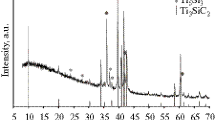Abstract
It has been known for some 25 years that charge can be stored in some important battery electrodes by the insertion of ionic species from the electrolyte. Insertion reactions play an especially important role in current versions of lithium batteries, where lithium cations are typically the inserted species in both electrodes. Hydrogen cations (protons) are the guest species during the operation of both the Ni(OH)2/NiOOH electrode and the “MnO2” electrode in aqueous systems.
Whereas most attention has been given to materials in which the guest species are cations, it is also possible to have anion insertion into some crystal structures. Materials in which the structure can accommodate either cations or anions are especially interesting.
The hexacyanometallates, with variations of the cubic ReO3 type structure with rather large intercell windows, represent an interesting example. They can accommodate a wide variety of guest ions of both charges. Cations can be inserted into the structure at relatively low potentials, and anions can be inserted at more positive potentials. A number of interesting features and properties of this family of materials are discussed.
Similar content being viewed by others
16. References
M.S. Whittingham, R.A. Huggins, J. Chem. Phys.54, 414 (1971).
M.S. Whittingham, R.A. Huggins, in:Fast Ion Transport in Solids (W. v. Gool, Ed.) North-Holland, 1973, p. 645.
B. C. H. Steele, in:Fast Ion Transport in Solids (W. v. Gool, Ed.) North-Holland, 1973, p. 103.
M.B. Armand, in:Fast Ion Transport in Solids (W. v. Gool, Ed.) North-Holland, 1973, p. 665.
D.T. Ferrell, W.C. Vosburgh, J. Electrochem. Soc.98, 334 (1951).
R.S. Johnson, W.C. Vosburgh, J. Electrochem. Soc.100, 471 (1953).
J.P. Brenet, 8th CITCE, Butterworth, Madrid, 1958, p. 394.
A. Kozawa, J.F. Yeager, J. Electrochem. Soc.112, 959 (1965).
A. Kozawa, R.A. Powers, J. Electrochem. Soc.113, 870 (1966).
A. Kozawa, R.A. Powers, Electrochem. Technology5, 535 (1967).
A. Kozawa, R.A. Powers, J. Chem. Ed.49, 587 (1972).
M.S. Whittingham, J. Electrochem. Soc.123, 315 (1976).
L.B. Ebert, in:Annual Review of Materials Science (R.A. Huggins, Ed.) Annual Reviews, Inc., 1976, vol.6, p. 181.
R. Yazami, P. Touzain, J. Power Sources9, 365 (1983).
T. Nagaura, K. Tozawa, Prog. in Batteries & Solar Cells9, 209 (1990).
P.J. Nigrey, A.G. MacDiarmid, A.J. Heeger, J. Chem. Soc. Chem. Commun., 578 (1979).
A.G. MacDiarmid, A.J. Heeger, Synthetic Metals1, 101 (1979/80).
P.J. Nigrey, D. MacInnes, D.P. Nairns, A.G. MacDiarmid, A.J. Heeger, J. Electrochem. Soc.128, 1651 (1981).
A. Rudge, J. Davey, S. Gottesfeld, J.P. Ferraris, Proc. Symp. on New Sealed Rechargeable Batteries and Supercapacitors (B.M. Barnett, E. Dowgiallo, G. Halpert, Y. Matsuda and Z. Takehara, Eds.) Electrochem. Soc., 1993, p. 74.
S.-K. Joo, I.D. Raistrick, R.A. Huggins, Materials Research Bulletin20, 897 (1985).
S.-K. Joo, I.D. Raistrick, R.A. Huggins, Materials Research Bulletin20, 1265 (1985).
S.-K. Joo, I.D. Raistrick, R.A. Huggins, Solid State Ionics17, 313 (1985).
S.-K. Joo, I.D. Raistrick, R.A. Huggins, Solid State Ionics18/19, 592 (1986).
Y. Inaguma, et al., Solid State Commun.86, 689 (1993).
H. Kawai, J. Kuwano, J. Electrochem. Soc.141, L78 (1994).
Y. Inaguma, L. Chen, M. Itoh, T. Nakamura, Solid State Ionics70/71, 196, (1994); M. Itoh, Y. Inaguma, W.-H. Jung, L. Chen, T. Nakamura70/71, 203 (1994).
Y. Inaguma, J. Yu, Y.-J. Shan, M. Itho, T. Nakamura, J. Electrochem. Soc.142, L8 (1995).
A.D. Robertson, S. Garcia Martin, A. Coats, A. R. West, J. Mater. Chem.5, 1405 (1995).
P. Birke, S. Scharner, R.A. Huggins, W. Weppner, J. Electrochem. Soc.144, (1997).
M.B. Robin, P. Day, Adv. Inorg. Chem. Radiochem.10, 247 (1967).
J. Brown, Philos. Trans.33, 17 (1724).
H.B. Weiser,Inorganic Colloid Chemistry,Vol 3,Colloidal Salts, John Wiley & Sons, New York, 1938, p. 343 ff.
J.F. Keggin, F.D. Miles, Nature137, 577 (1936).
J.F. Duncan, P.W.R. Wrigley, J. Chem. Soc., 1120 (1963).
D. Knapp, Kent State University, PhD Thesis (1985).
R.E. Wilde, S.N. Ghosh, B.J. Marshall, Inorg. Chem.9, 2512 (1970).
L.M. Siperko, T. Kuwana, J. Electrochem. Soc.130, 396 (1983).
A.L. Crumblis, P.S. Lugg, N. Morosoff, Inorg. Chem.23, 4701 (1984).
M.B. Armand, M.S. Whittingham, R.A. Huggins, Mat. Res. Bull.7, 101 (1972).
A. Ludi, Chemie in unserer Zeit22, 123 (1988).
H. Kellawi, D.R. Rosseinsky, J. Electroanal. Chem.131, 373 (1982).
K. Itaya, T. Ataka, S. Toshima, T. Shinohara, J. Phys. Chem.86, 2415 (1982).
T. Oi, in:Annual Review of Materials Science (R.A. Huggins, Ed.) 1986, vol.16, p. 185.
K. Itaya, T. Ataka, S. Toshima, J. Am. Chem. Soc.104, 4767 (1982).
I.D. Raistrick, N. Endow, S. Lewkowitz, R.A. Huggins, J. Inorg. Nucl. Chem.39, 1779 (1977).
R. Rigamonti, Gazz. Chim. Ital67, 137, 146 (1937).
R. Rigamonti, Gazz. Chim. Ital.68, 803 (1938).
A. Xidix, V.D. Neff, J. Electrochem. Soc.138, 3637 (1991).
K. Tennakone, W.G.O. Dharmaratne, Phys. C, Solid State Physics16, 5633 (1983).
K. Honda, H. Hayashi, J. Electrochemical Soc.134, 1330 (1987).
V.D. Neff, J. Electrochem. Soc.132, 1382 (1985).
K. Ogura, S. Yamasaki, J. Chem. Soc. Faraday Trans.81, 267 (1985).
M.K. Carpenter, R.S. Conell, J. Electrochem. Soc.137, 2464 (1990).
K. Itaya, H. Akahoshi and S. Toshima, J. Electrochem. Soc.129, 1498 (1982).
Author information
Authors and Affiliations
Rights and permissions
About this article
Cite this article
Huggins, R.A. Mixed-conductors with either cation or anion insertion. Ionics 3, 379–389 (1997). https://doi.org/10.1007/BF02375714
Received:
Accepted:
Issue Date:
DOI: https://doi.org/10.1007/BF02375714




